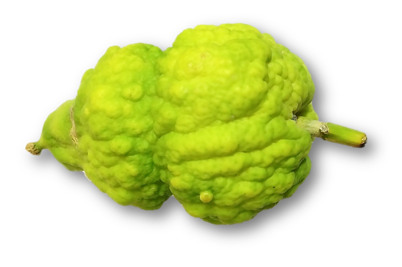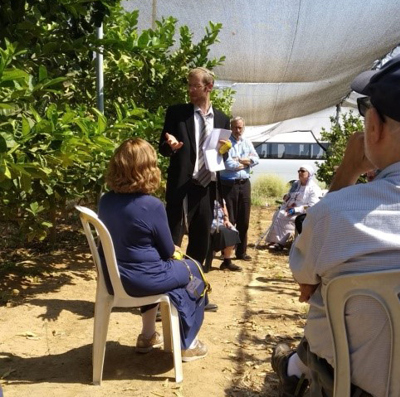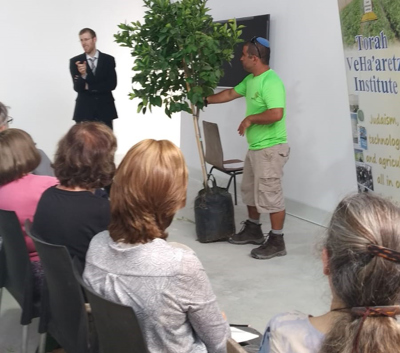
Tishrei 5780, Issue no. 12
The etrog
What is a gartel etrog? Which segulot are ascribe to eating etrog jam and why? Why can't we use a grafted etrog for the arba minim? Fun facts and important information about this ancient fruit. See here.
Is it preferable to take arba minim that grew in Israel even though taking the arba minim isn't a land-dependent mitzvah? Click here.

Photo by Rabbi Moshe Bloom
OU tours certified nursery and etrog orchard
In Elul, members of OU Jerusalem toured the Marmelstein Nursery in Ganei Tal, supervised by Torah VeHa'artez Institute for orlah and kila'im. We discussed the unique challenges involved in raising trees in this manner, and some even purchased saplings. Following lunch at the Chasalat-Alei Katif plant, we went on to see a lemon and etrog orchard in Kfar Maimon, where we learned about the process of etrog cultivation. Finally, we went to the home of the etrog grower and purchased mehudar etrogim at low prices! Special thanks to Yaffa Brochin for organizing the tour.


Lectures and home-based workshops
Organizing a workshop in your home and looking for an interesting idea? In search of an enlightening lecture for your congregation? Book a practical halacha lecture (in Hebrew or English) on gardening and halacha in the Land of Israel.
Q&A
I see that it says on all the etrog boxes “not grafted.” What exactly does that mean?
Answer / Rabbi Moshe Bloom
The Torah forbids grafting trees of two different species (kilei ilan). All over the world, etrog trees are grafted: either onto lemon or hushhash trees. The issue of grafted etrogim arose in the late 16th century, and the vast majority of poskim forbade using a grafted etrog as part of the arba minim (they can be eaten, however). It seems that prior to this time, etrogim were not grafted in a prohibited fashion, so this had not been an issue.
Why can’t a grafted etrog be used for the arba minim?
The main reason is that this is a mitzvah haba’ah ba’aveirah, a mitzvah performed by way of a transgression (the Talmud cites the example of a stolen lulav), since grafting two different species is a Torah prohibition.
Another approach views such etrogim as the products of two trees (an etrog scion and a lemon rootstock), meaning that the etrog is not 100% an etrog. Note that according to current scientific studies, the fruit’s genetic makeup comes only from the scion (=the etrog tree), and not from the rootstock. That is, if we plant seeds from a grafted etrog, they will grow as etrog trees for all intents and purposes, without any lemon rootstock influences.
Abroad, there are places where local farmers grow in the same orchard non-grafted etrogim for Jews and grafted etrogim for non-Jews (for candied etrog, jams, liquor, and cosmetics).
All kashrut agencies worldwide ensure that etrogim they certify are not grafted, so you can be sure that etrogim with kashrut certification are not grafted.
If you purchase an etrog tree for your garden, make sure it was not grafted in the nursery. And if you receive a home-grown etrog, make sure it was from a tree that wasn’t grafted.
